Quantitative Assessment of Shallow Groundwater Sustainability in North China Plain
Abstract
1. Introduction
2. Data and Methods
2.1. Data
2.1.1. Groundwater Storage Estimation from Well Observation
2.1.2. Precipitation Data
2.2. Groundwater Performance Indicators
2.2.1. Reliability
2.2.2. Resilience
2.2.3. Vulnerability
2.2.4. Sustainability Index
2.3. Multiple Linear Regression
2.3.1. Functional Model
2.3.2. Dominance Analysis Using Proportional Reduction of Error
3. Results and Discussions
3.1. State of Shallow Groundwater Storage
3.2. Groundwater Performance Indicators
3.3. Influence of Different Drivers on Shallow Groundwater Variability
4. Conclusions
- (1)
- There is an obvious long-term shallow groundwater deficit in the Piedmont Plain, while the deficit is not significant in the East-Central Plain.
- (2)
- The reliability is below the medium level (reliability < 0.5) in most areas of the NCP, and there is very low ability (resilience < 0.2) of most shallow aquifers to recuperate from the decline in groundwater storage. Meanwhile, the deficit of groundwater storage in most shallow aquifers is not serious (vulnerability < 0.4) in the NCP. The low reliability and resilience values in most areas of the NCP result in the weak sustainable development ability (sustainable index < 0.1) of shallow groundwater storage.
- (3)
- The multiple linear regression model was used to separate the impacts of precipitation and non-precipitation components, revealing the sensitivity of climatic and non-climatic drivers of shallow groundwater in the NCP. The results demonstrate that the non-climatic factor is the dominant driver of shallow groundwater storage depletion in NCP.
Author Contributions
Funding
Data Availability Statement
Acknowledgments
Conflicts of Interest
References
- Li, P.; Zha, Y.; Shi, L.; Zhong, H. Identification of the terrestrial water storage change features in the North China Plain via independent component analysis. J. Hydrol. Reg. Stud. 2021, 38, 100855. [Google Scholar] [CrossRef]
- Tang, Q.; Zhang, X.; Yin, T. Anthropogenic impacts on mass change in North China. Geophs. Res. Lett. 2013, 40, 3924–3928. [Google Scholar] [CrossRef]
- Feng, T.; Shen, Y.; Chen, Q.; Wang, F. Seasonal driving sources and hydrological-induced secular trend of the vertical displacement in North China. J. Hydrol. Reg. Stud. 2022, 41, 101091. [Google Scholar] [CrossRef]
- Chao, N.; Chen, G.; Li, J.; Xiang, L.; Wang, Z.; Tian, K. Groundwater Storage Change in the Jinsha River Basin from GRACE, Hydrologic Models, and In Situ Data. Groundwater 2020, 58, 735–748. [Google Scholar] [CrossRef]
- Wu, Y.; Pei, J.; Wang, Z.; Zhang, Y.; Yuan, H. Analysis on the Characteristics of Crustal Structure and Seismotectonic Environment in Zigui Basin, Three Gorges. Front. Earth Sci. 2021, 9, 780209. [Google Scholar] [CrossRef]
- Gong, H.; Pan, Y.; Zheng, L.; Li, X.; Zhu, L.; Zhang, C.; Huang, Z.; Li, Z.; Wang, H.; Zhou, C. Long-term groundwater storage changes and land subsidence development in the North China Plain (1971–2015). Hydrogeol. J. 2018, 26, 1417–1427. [Google Scholar] [CrossRef]
- Wang, Y.; Zheng, C.; Ma, R. Review: Safe and sustainable groundwater supply in China. Hydrogeol. J. 2018, 26, 1301–1324. [Google Scholar] [CrossRef]
- Feng, W.; Zhong, M.; Lemoine, J.M.; Biancale, R.; Hsu, H.T.; Xia, J. Evaluation of groundwater depletion in North China using the gravity recovery and climate experiment (GRACE) data and ground-based measurements. Water Resour. Res. 2013, 49, 2110–2118. [Google Scholar] [CrossRef]
- Famiglietti, J.S. The global groundwater crisis. Nat. Clim. Change 2014, 4, 945–948. [Google Scholar] [CrossRef]
- Zhang, C.; Duan, Q.; Yeh, P.J.-F.; Pan, Y.; Gong, H.; Moradkhani, H.; Gong, W.; Lei, X.; Liao, W.; Xu, L.; et al. Sub-regional groundwater storage recovery in North China Plain after the South-to-North water diversion project. J. Hydrol. 2021, 597, 126156. [Google Scholar] [CrossRef]
- Yin, W.; Han, S.-C.; Zheng, W.; Yeo, I.-Y.; Hu, L.; Tangdamrongsub, N.; Ghobadi-Far, K. Improved water storage estimates within the North China Plain by assimilating GRACE data into the CABLE model. J. Hydrol. 2020, 590, 125348. [Google Scholar] [CrossRef]
- Xiang, L.; Wang, H.; Steffen, H.; Wu, P.; Jia, L.; Jiang, L.; Shen, Q. Groundwater storage changes in the Tibetan Plateau and adjacent areas revealed from GRACE satellite gravity data. Earth Planet. SC. Lett. 2016, 449, 228–239. [Google Scholar] [CrossRef]
- Wu, Y.; Zhao, Q.; Zhang, B.; Wu, W. Characterizing the Seasonal Crustal Motion in Tianshan Area Using GPS, GRACE and Surface Loading Models. Remote Sens. 2017, 9, 1303. [Google Scholar] [CrossRef]
- Fishman, R.; Devineni, N.; Raman, S. Can improved agricultural water use efficiency save India’s groundwater? Environ. Res. Lett. 2015, 10, 084022. [Google Scholar] [CrossRef]
- Rodell, M.; Velicogna, I.; Famiglietti, J.S. Satellite-based estimates of groundwater depletion in India. Nature 2009, 460, 999–1003. [Google Scholar] [CrossRef]
- Tiwari, V.M.; Wahr, J.; Swenson, S. Dwindling groundwater resources in northern India, from satellite gravity observations. Geophys. Res. Lett. 2009, 36, 1–5. [Google Scholar] [CrossRef]
- Asoka, A.; Gleeson, T.; Wada, Y.; Mishra, V. Relative contribution of precipitation and pumping to changes in groundwater storage in India. Nat. Geosci. 2017, 10, 109–118. [Google Scholar] [CrossRef]
- Mishra, V.; Aadhar, S.; Asoka, A.; Pai, S.; Kumar, R. On the frequency of the 2015 monsoon season drought in the Indo-Gangetic Plain. Geophys. Res. Lett. 2016, 43, 102–112. [Google Scholar] [CrossRef]
- Panda, D.K.; Mishra, A.; Jena, S.K.; James, B.K.; Kumar, A. The influence of drought and anthropogenic effects on groundwater levels in Orissa, India. J. Hydrol. 2007, 343, 140–153. [Google Scholar] [CrossRef]
- Yirdaw, S.Z.; Snelgrove, K.R.; Agboma, C.O. GRACE satellite observations of terrestrial moisture changes for drought characterization in the Canadian Prairie. J. Hydrol. 2008, 356, 84–92. [Google Scholar] [CrossRef]
- Wang, K.; Chen, H.; Fu, S.; Li, F.; Wu, Z.; Xu, D. Analysis of exploitation control in typical groundwater over-exploited area in North China Plain Hydrol. Sci. J. 2021, 66, 851–861. [Google Scholar]
- Qian, Y.; Zhang, Z.; Fei, Y.; Chen, J.; Zhang, F.; Wang, Z. Sustainable exploitable potential of shallow groundwater in the North China Plain. Chin. J. Eco-Agric. 2014, 22, 890–897. [Google Scholar]
- Loucks, D.P. Quantifying trends in system sustainability. Hydrol. Sci. J. 2009, 42, 513–530. [Google Scholar] [CrossRef]
- Hashimoto, T.; Stedinger, J.R.; Loucks, D.P. Reliability, Resiliency, and Vulnerability Criteria For Water Resource System Performance Evaluetion. Water Resour. Res. 1982, 18, 14–20. [Google Scholar] [CrossRef]
- Nair, A.S.; Indu, J. Assessment of Groundwater Sustainability and Identifying Factors Inducing Groundwater Depletion in India. Geophys. Res. Lett. 2021, 48, e2020GL087255. [Google Scholar] [CrossRef]
- Liu, C.; Yu, J.J.; Kendy, E. Groundwater exploitation and its impact on the environment in the North China Plain. Water Inter. 2001, 26, 265–272. [Google Scholar]
- Liu, C.; Xia, J. Water problems and hydrological research in the Yellow River and the Huai and Hai River basins of China. Hydrol. Process. 2004, 18, 2197–2210. [Google Scholar] [CrossRef]
- Liu, J.; Zheng, C.; Zheng, L.; Lei, Y. Ground water sustainability: Methodology and application to the North China Plain. Groundwater 2008, 46, 897–909. [Google Scholar] [CrossRef] [PubMed]
- Zheng, C.; Liu, J.; Cao, G.; Kendy, E.; Wang, H.; Jia, Y. Can China cope with its water crisis?—Perspectives from the North China Plain. Groundwater 2010, 48, 350–354. [Google Scholar] [CrossRef]
- Chen, W. Groundwater in Hebei Province; Seismological Press: Beijing, China, 1999. (In Chinese) [Google Scholar]
- Fei, Y.; Miao, J.; Zhang, Z.; Chen, Z.; Song, H.; Yang, M. Analysis on evolution of groundwater depression cones and its leading factors in North China Plain [in Chinese with English abstract]. Resour. Sci. 2009, 31, 394–399. [Google Scholar]
- Cao, G.; Zheng, C.; Scanlon, B.R.; Liu, J.; Li, W. Use of flow modeling to assess sustainability of groundwater resources in the North China Plain. Water Resour. Res. 2013, 49, 159–175. [Google Scholar] [CrossRef]
- Nair, A.S.; Indu, J. Utilizing GRACE and GLDAS data for estimating groundwater storage variability over the Krishna Basin. ISPRS Ann. Photogramm. Remote Sens. Spat. Inf. Sci. 2018, 4, 129–136. [Google Scholar]
- Nair, A.S.; Indu, J. Improvement of land surface model simulations over India via data assimilation of satellite-based soil moisture products. J. Hydrol. 2019, 573, 406–421. [Google Scholar] [CrossRef]
- Jasechko, S.; Birks, S.J.; Gleeson, T.; Wada, Y.; Fawcett, P.J.; Sharp, Z.D.; McDonnell, J.J.; Welker, J.M. The pronounced seasonality of global groundwater recharge. Water Resour. Res. 2014, 50, 8845–8867. [Google Scholar] [CrossRef]
- Thomas, B.F.; Famiglietti, J.S.; Landerer, F.W.; Wiese, D.N.; Molotch, N.P.; Argus, D.F. GRACE Groundwater Drought Index: Evaluation of California Central Valley groundwater drought. Remote Sens. Environ. 2017, 198, 384–392. [Google Scholar] [CrossRef]
- Mays, L.W. Groundwater Resources Sustainability: Past, Present, and Future. Water Resour. Manag. 2013, 27, 4409–4424. [Google Scholar] [CrossRef]
- Joodaki, G.; Wahr, J.; Swenson, S. Estimating the human contribution to groundwater depletion in the Middle East, from GRACE data, land surface models, and well observations. Water Resour. Res. 2014, 50, 2679–2692. [Google Scholar] [CrossRef]
- Vining, G.; Judd, C.M.; Mcclelland, G.H. Data Analysis: A Model-Comparison Approach. Technometrics 1992, 34, 107. [Google Scholar] [CrossRef]
- Kendy, E.; Zhang, Y.; Liu, C.; Wang, J.; Steenhuis, T. Groundwater recharge from irrigated cropland in the North China Plain: Case study of Luancheng County, Hebei Province, 1949–2000. Hydrol. Process. 2004, 18, 2289–2302. [Google Scholar] [CrossRef]
- Huang, Z.; Pan, Y.; Gong, H.; Yeh, P.J.-F.; Li, X.; Zhou, D.; Zhao, W. Subregional-scale groundwater depletion detected by grace for both shallow and deep aquifers in North China Plain. Geophys. Res. Lett. 2015, 42, 1791–1799. [Google Scholar] [CrossRef]
- Liu, C.; Zheng, H. South-to-north Water Transfer Schemes for China. Int. J. Water Resour. 2002, D18, 453–471. [Google Scholar] [CrossRef]
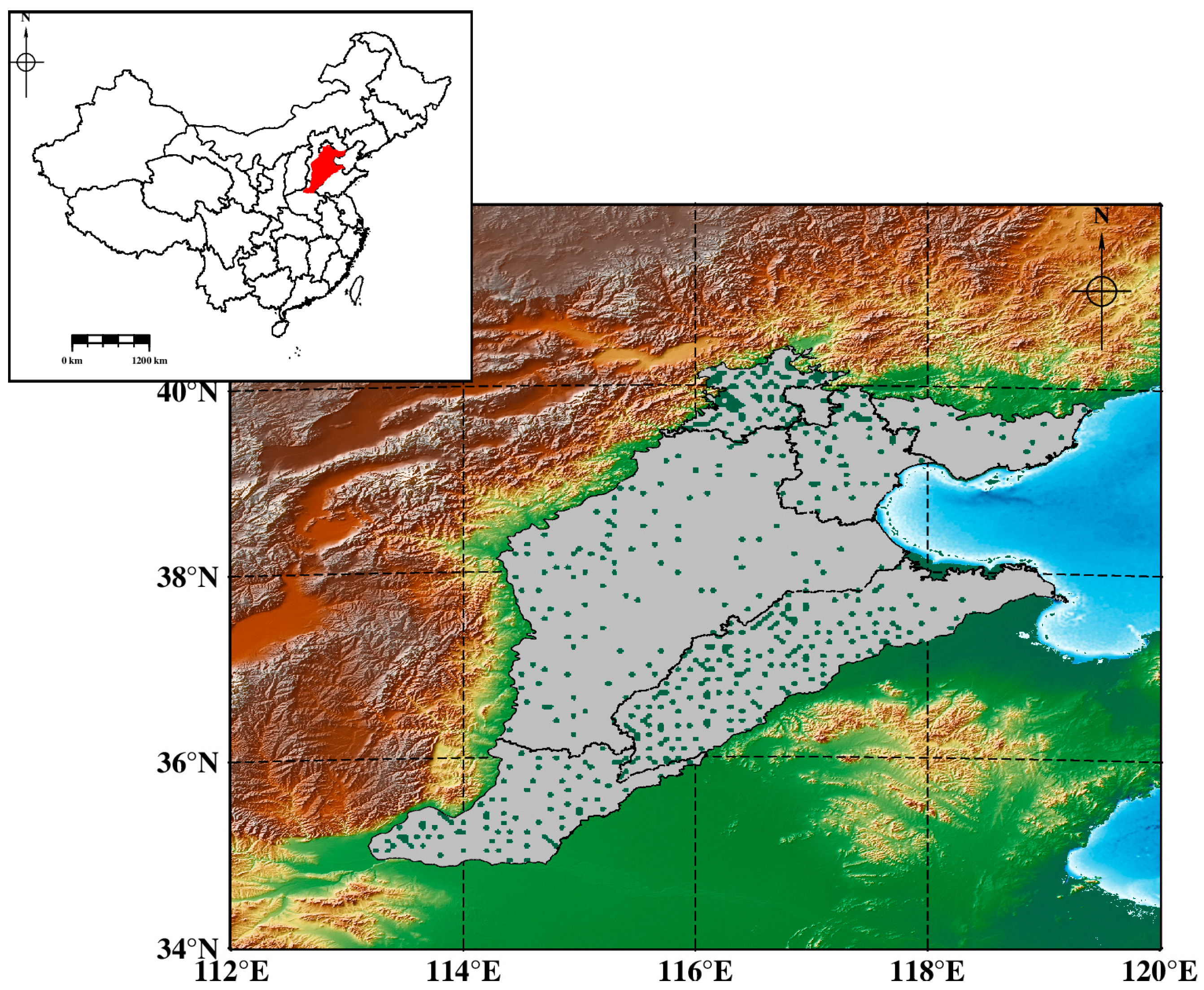
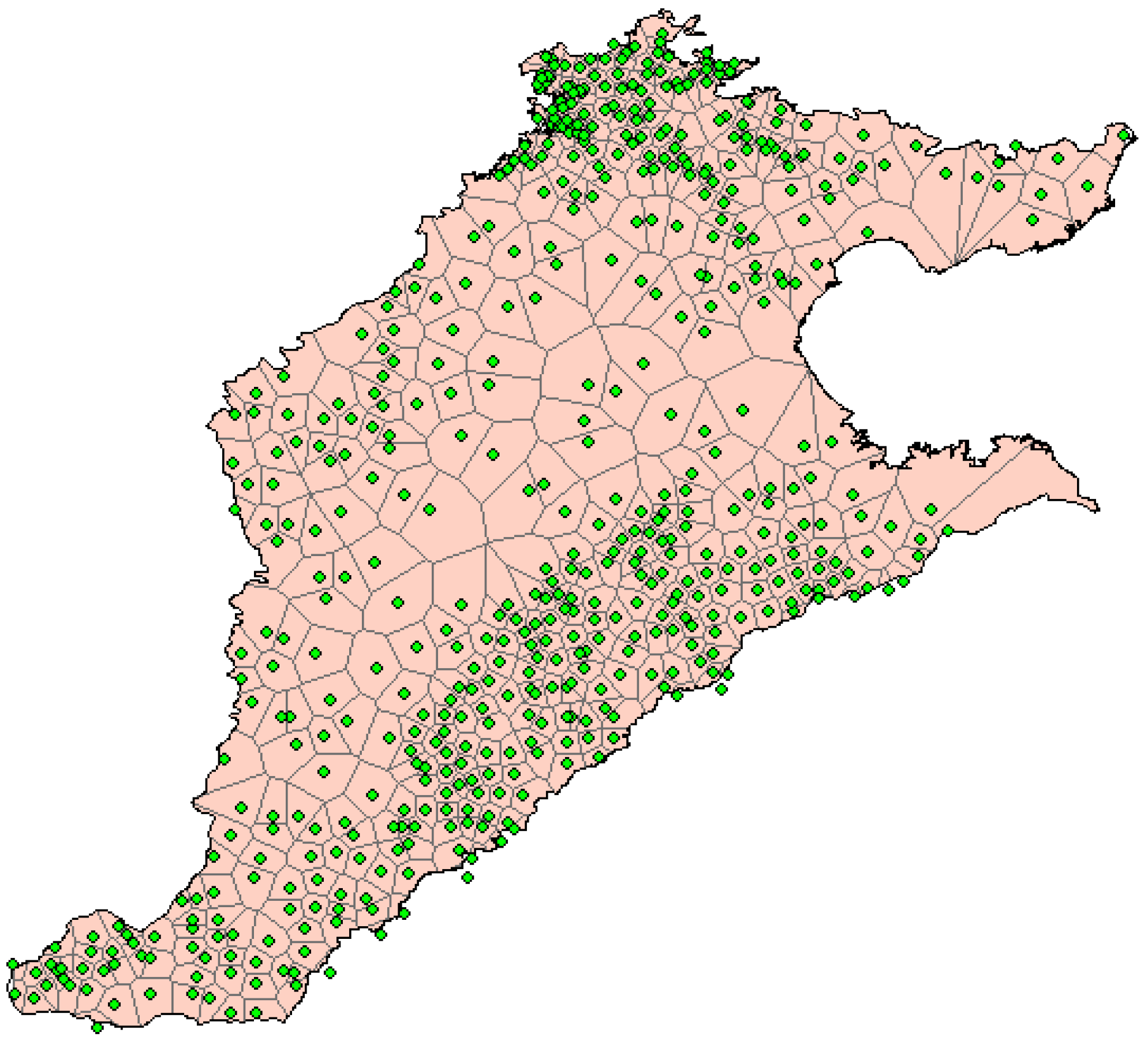
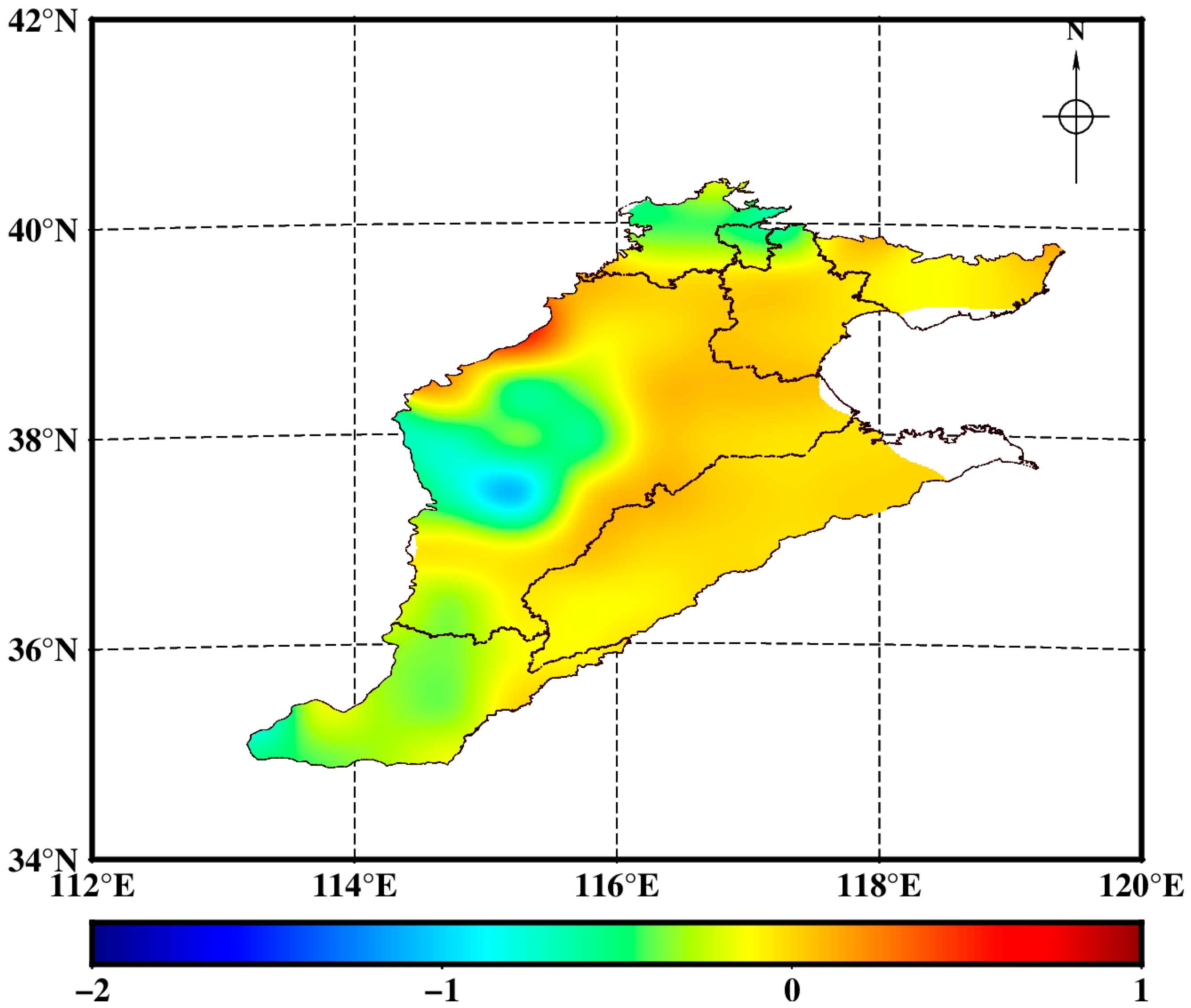

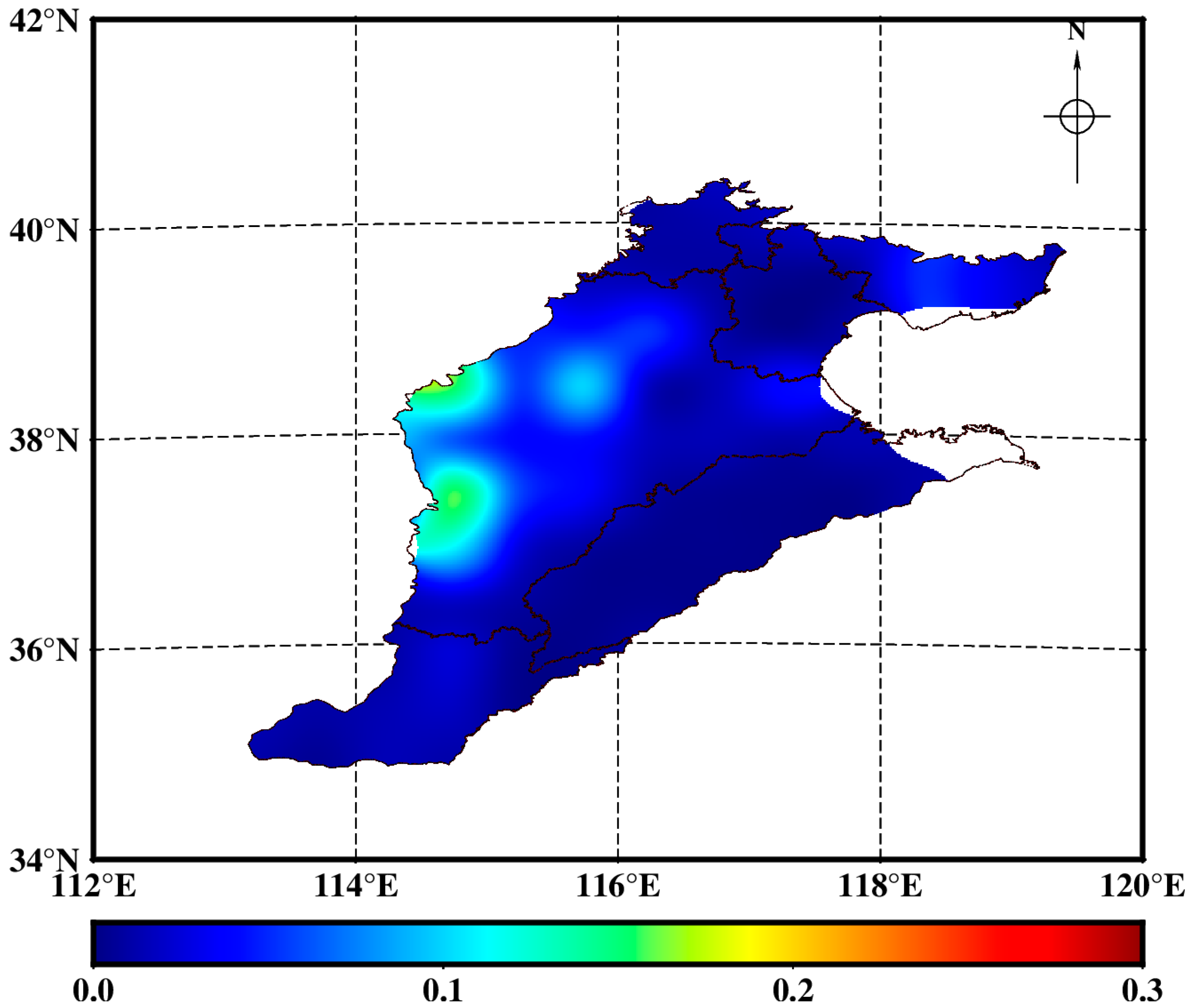
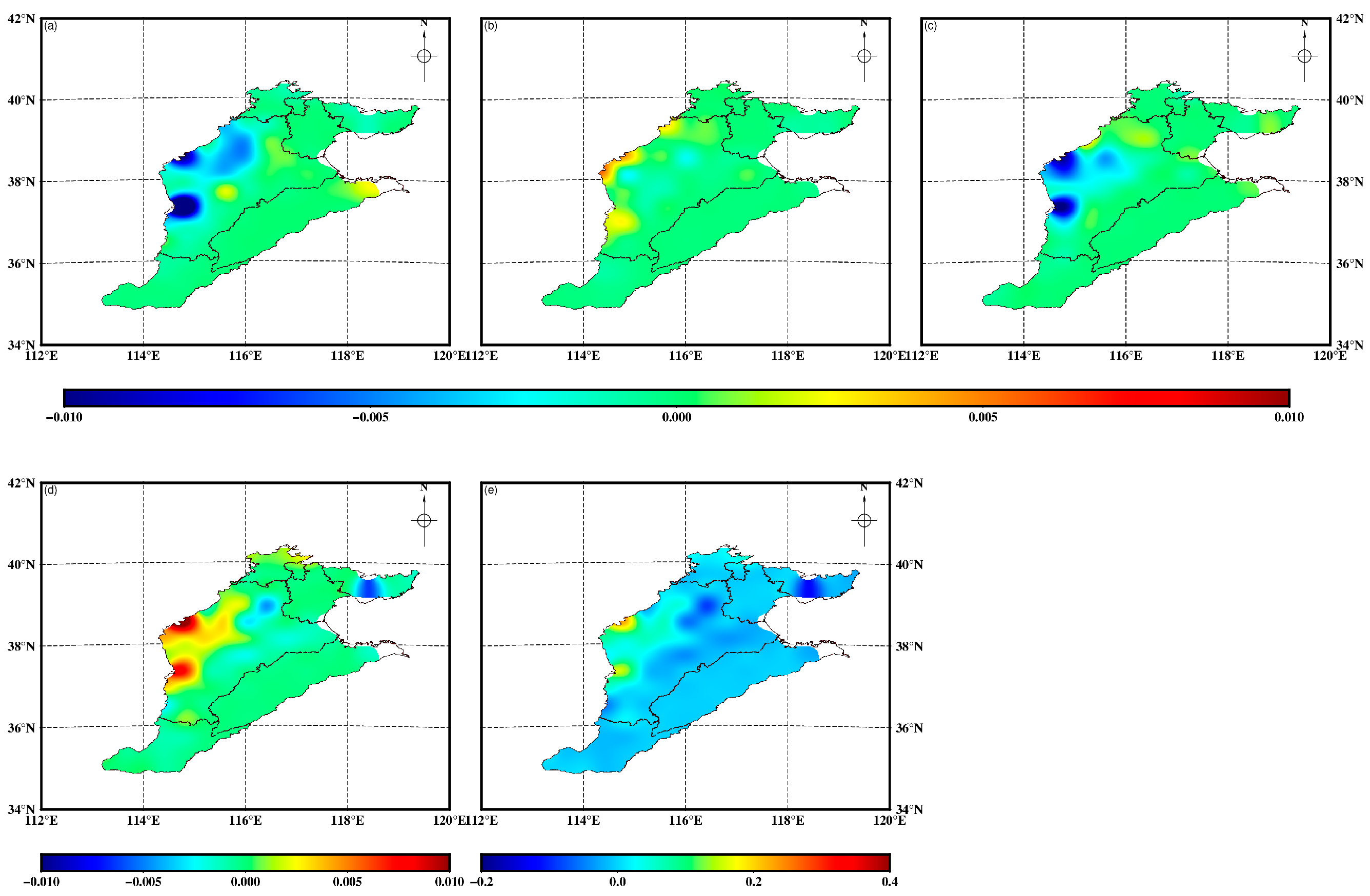
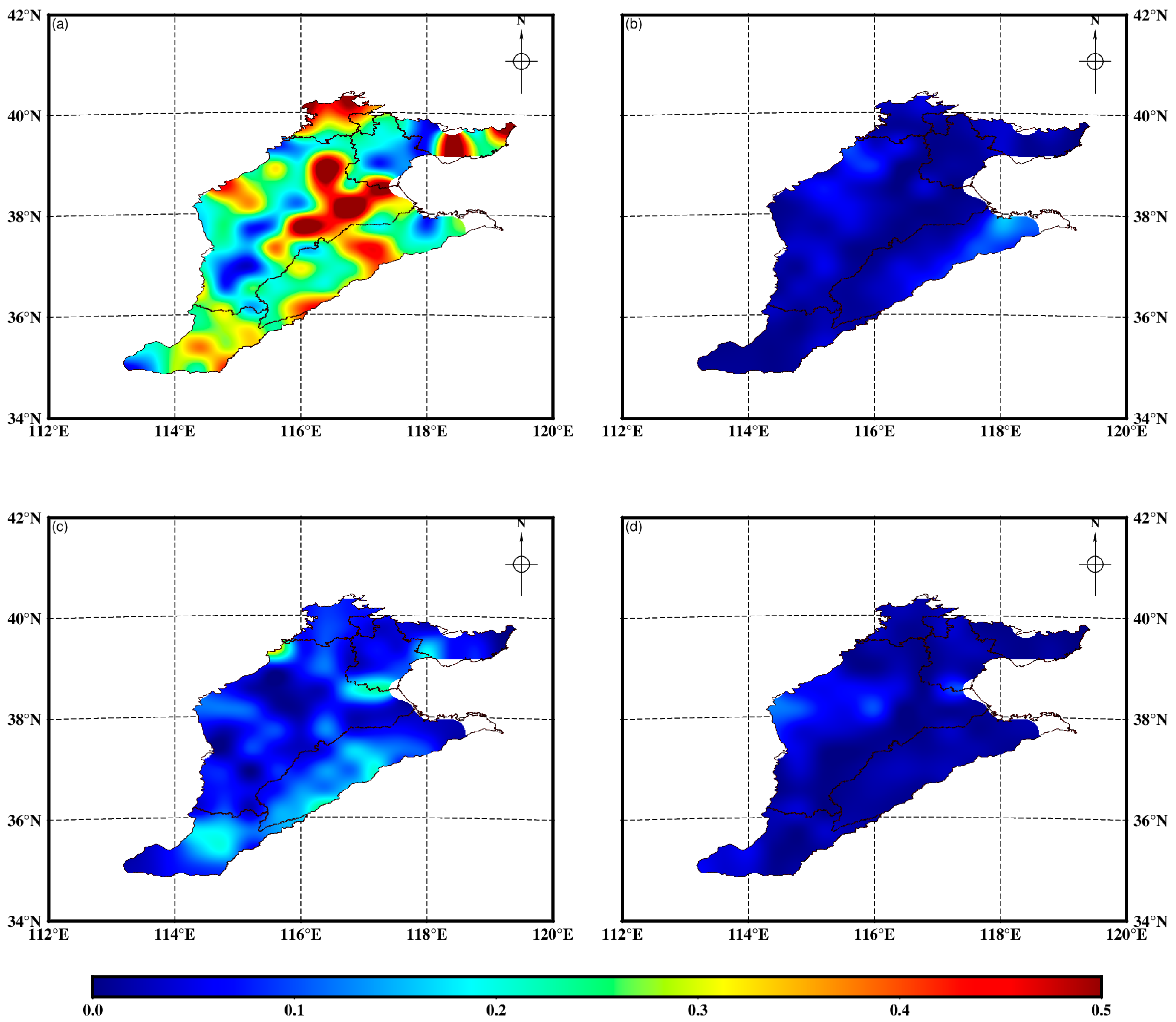
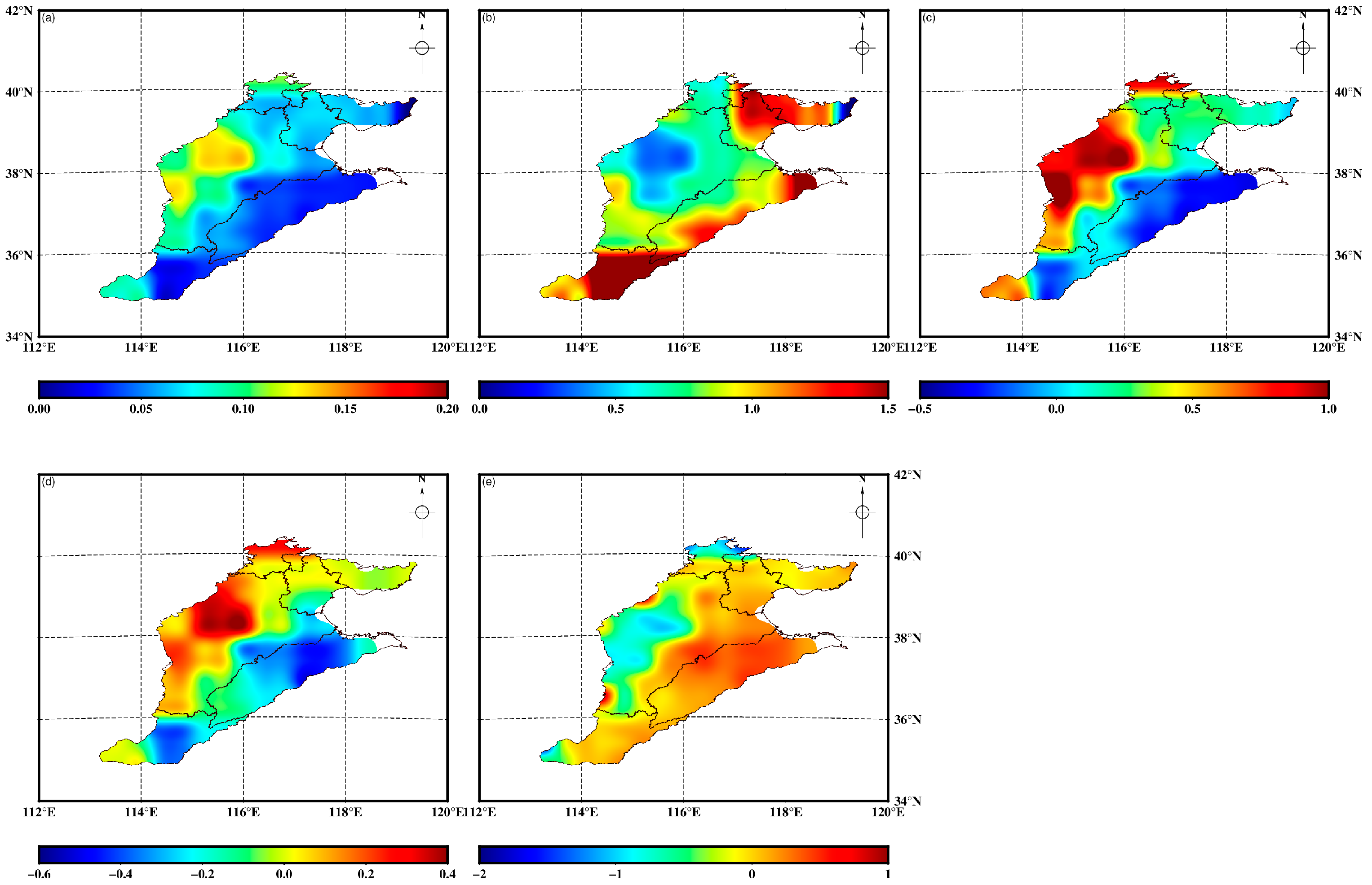
| Correlation Index | Climatic Component | Non-Climatic Component |
|---|---|---|
| Shallow groundwater storage | −0.36 | 0.99 |
Disclaimer/Publisher’s Note: The statements, opinions and data contained in all publications are solely those of the individual author(s) and contributor(s) and not of MDPI and/or the editor(s). MDPI and/or the editor(s) disclaim responsibility for any injury to people or property resulting from any ideas, methods, instructions or products referred to in the content. |
© 2023 by the authors. Licensee MDPI, Basel, Switzerland. This article is an open access article distributed under the terms and conditions of the Creative Commons Attribution (CC BY) license (https://creativecommons.org/licenses/by/4.0/).
Share and Cite
Zhou, H.; Dai, M.; Wei, M.; Luo, Z. Quantitative Assessment of Shallow Groundwater Sustainability in North China Plain. Remote Sens. 2023, 15, 474. https://doi.org/10.3390/rs15020474
Zhou H, Dai M, Wei M, Luo Z. Quantitative Assessment of Shallow Groundwater Sustainability in North China Plain. Remote Sensing. 2023; 15(2):474. https://doi.org/10.3390/rs15020474
Chicago/Turabian StyleZhou, Hao, Min Dai, Min Wei, and Zhicai Luo. 2023. "Quantitative Assessment of Shallow Groundwater Sustainability in North China Plain" Remote Sensing 15, no. 2: 474. https://doi.org/10.3390/rs15020474
APA StyleZhou, H., Dai, M., Wei, M., & Luo, Z. (2023). Quantitative Assessment of Shallow Groundwater Sustainability in North China Plain. Remote Sensing, 15(2), 474. https://doi.org/10.3390/rs15020474










